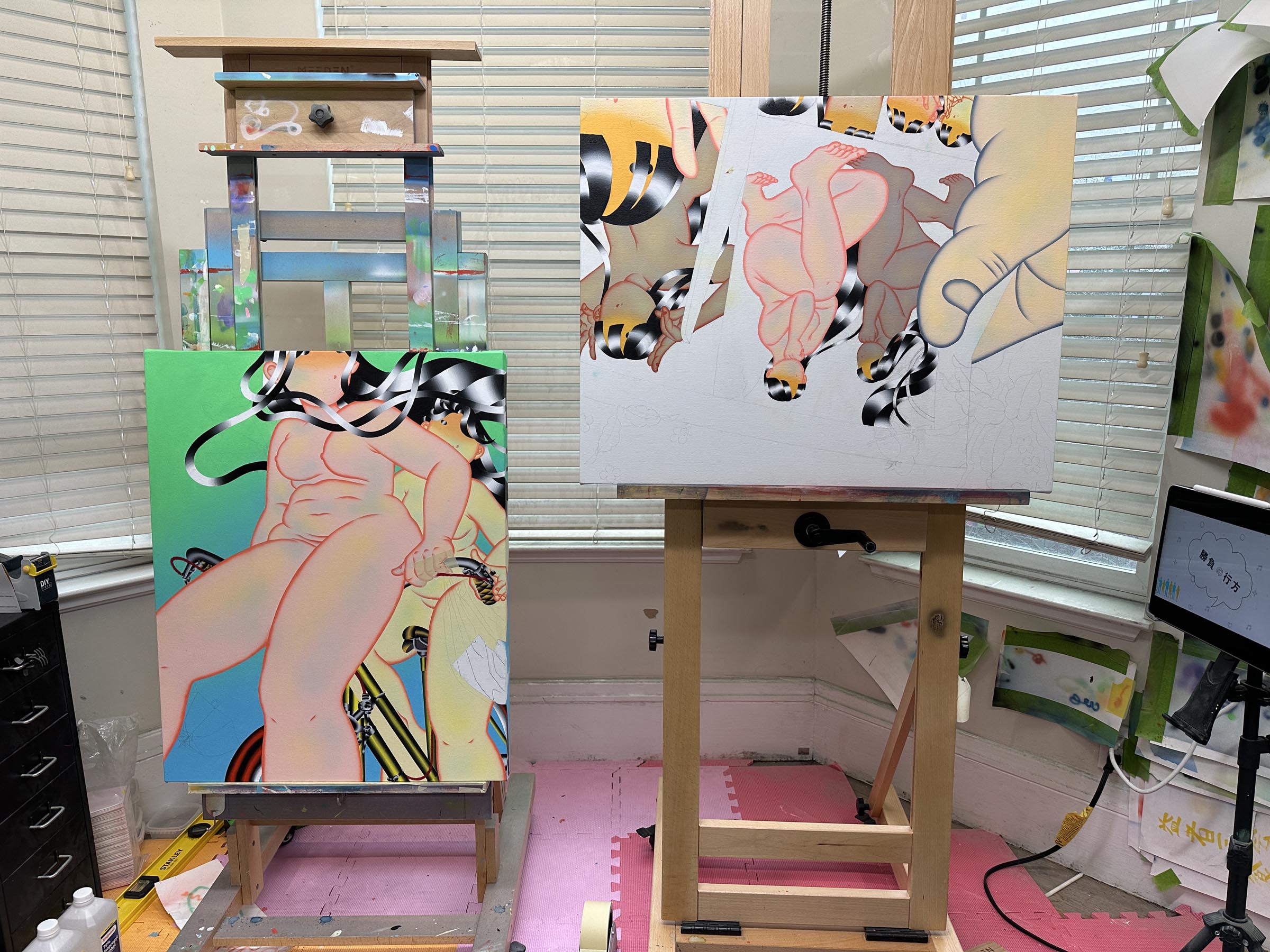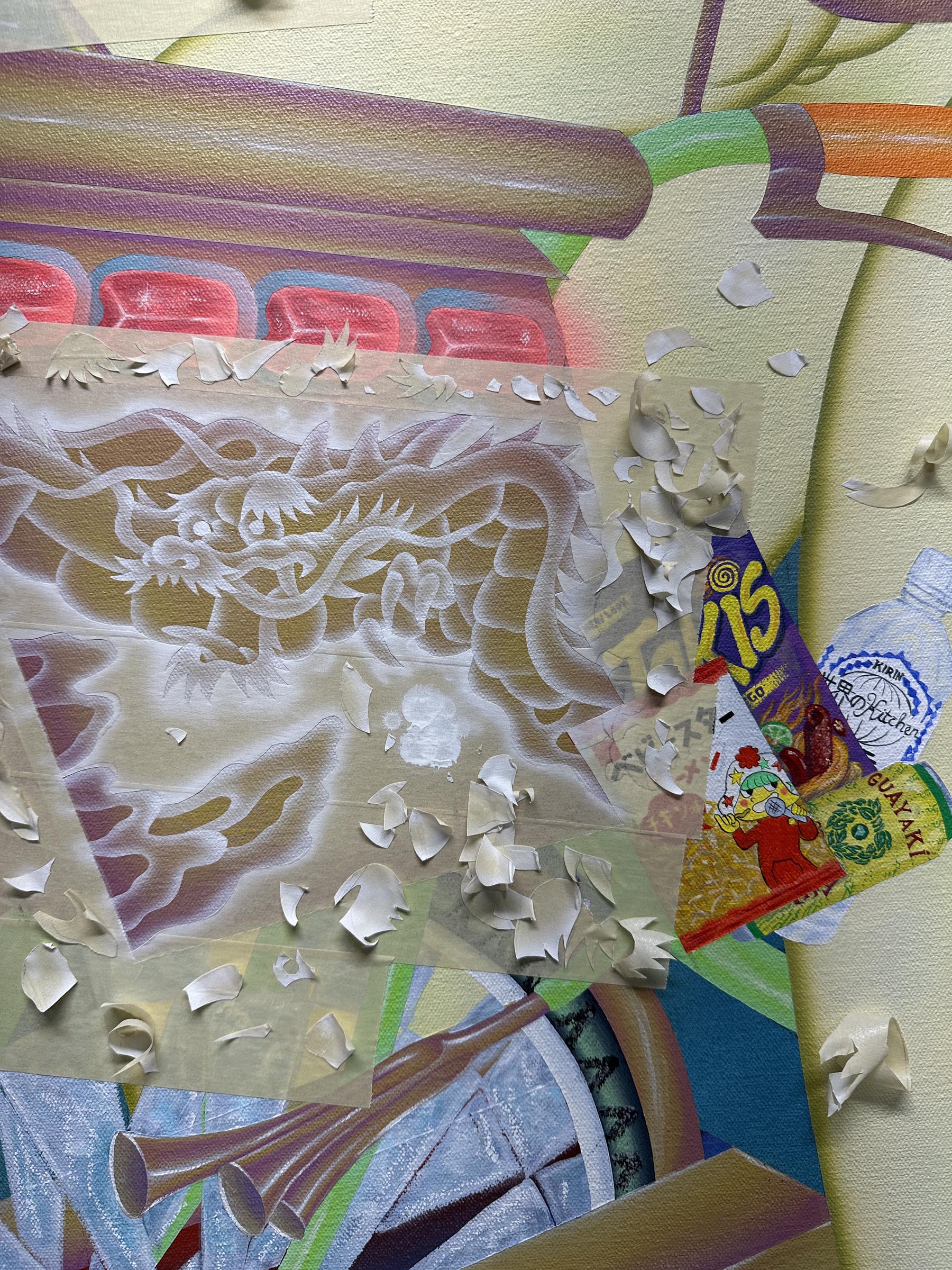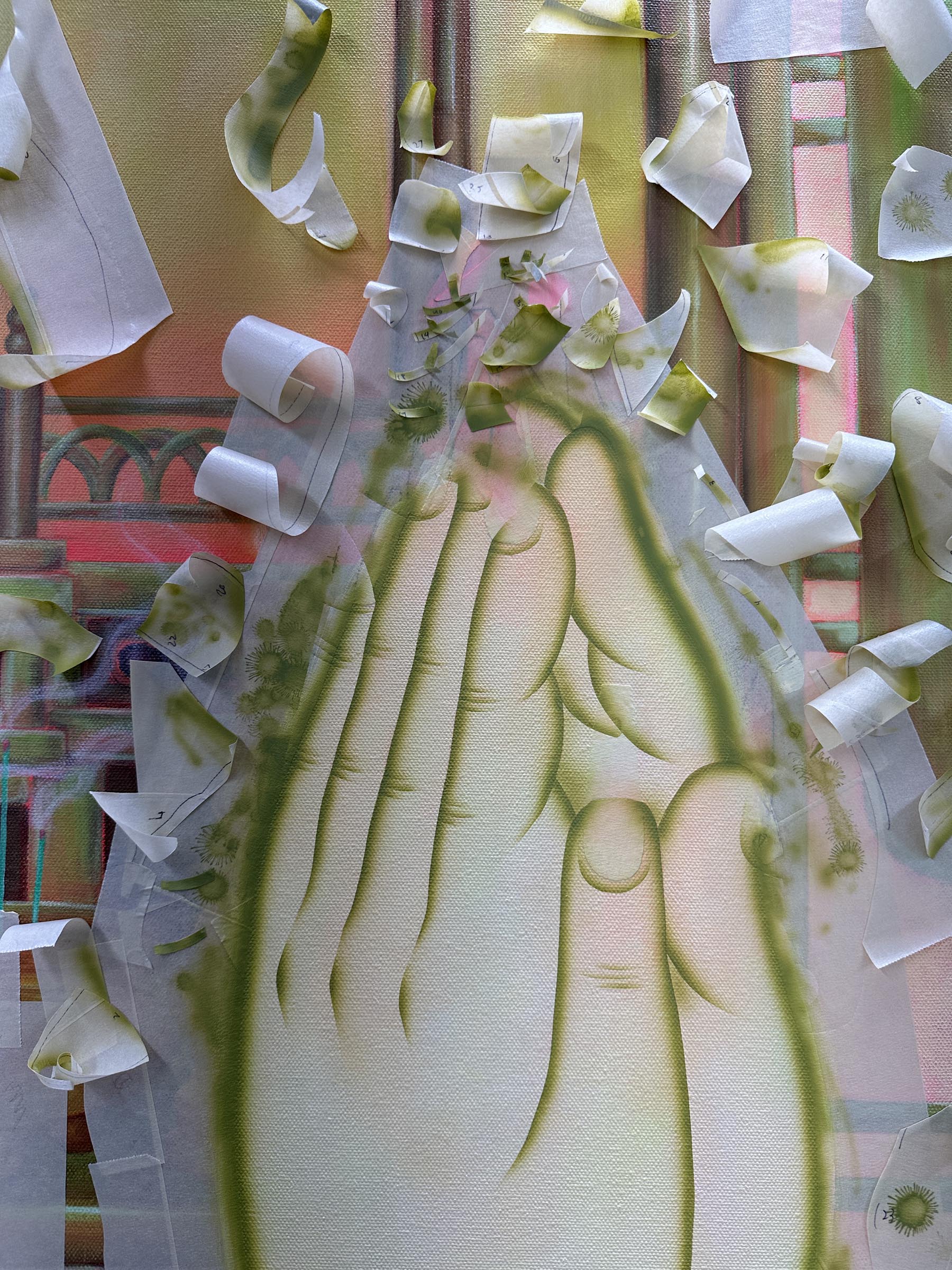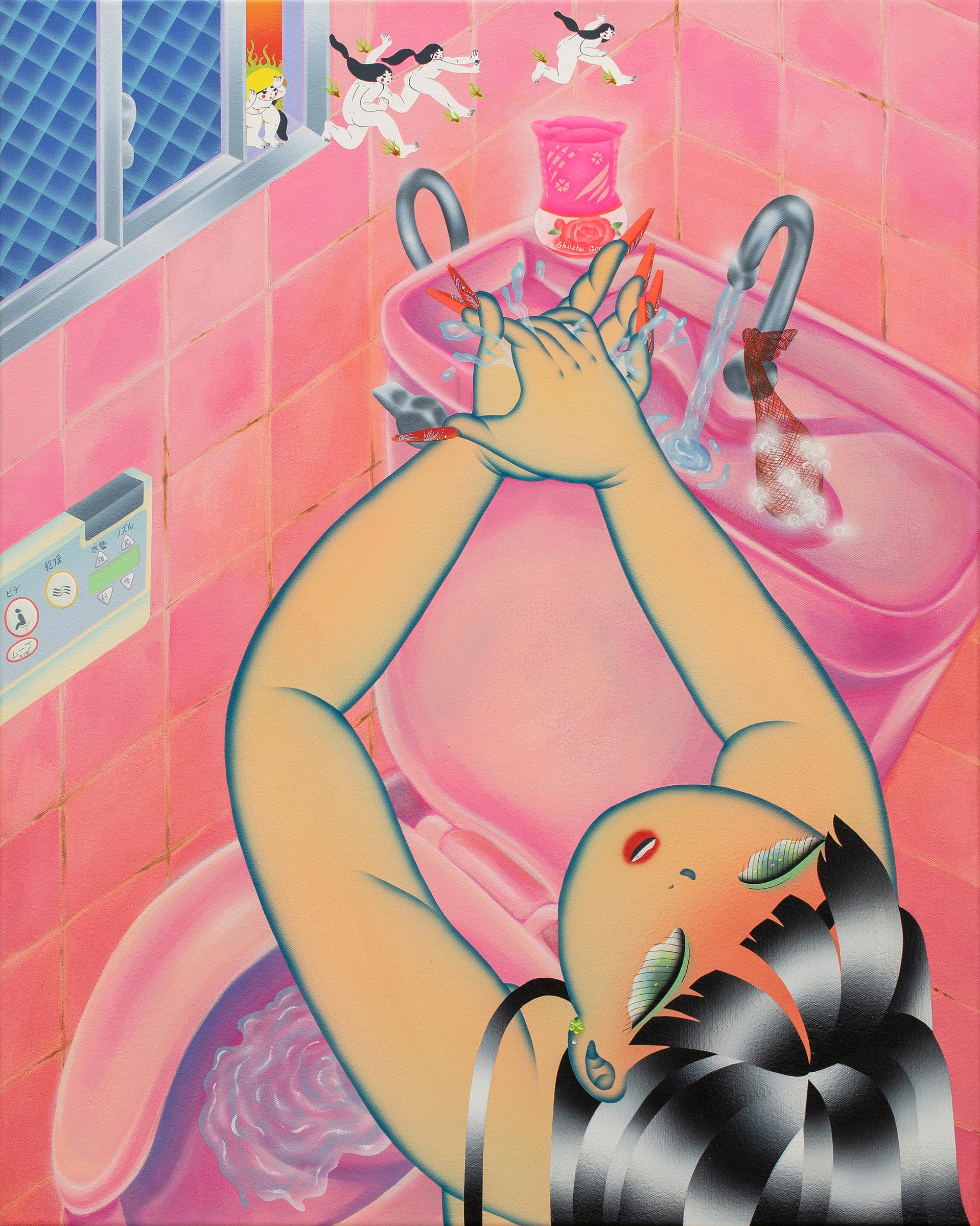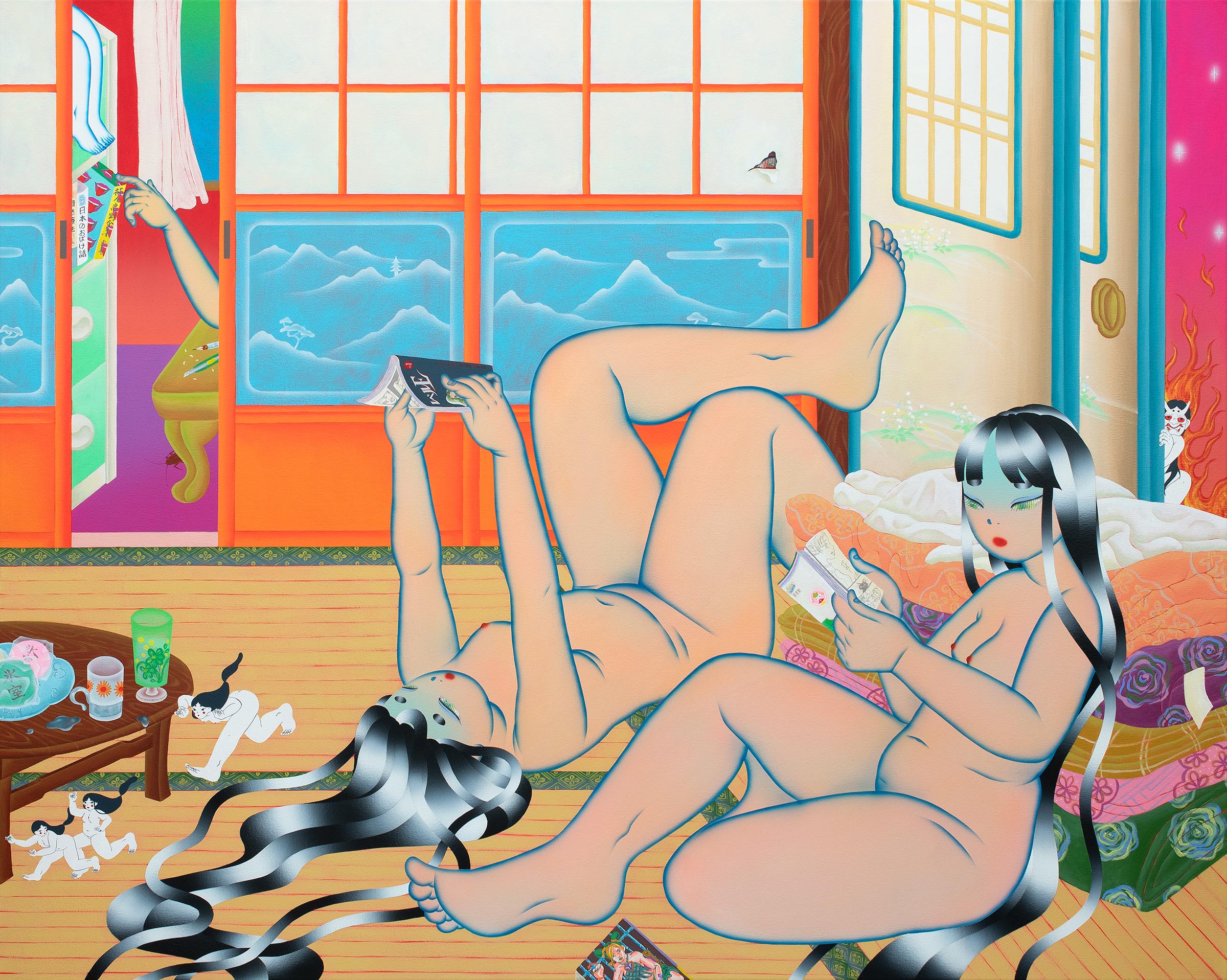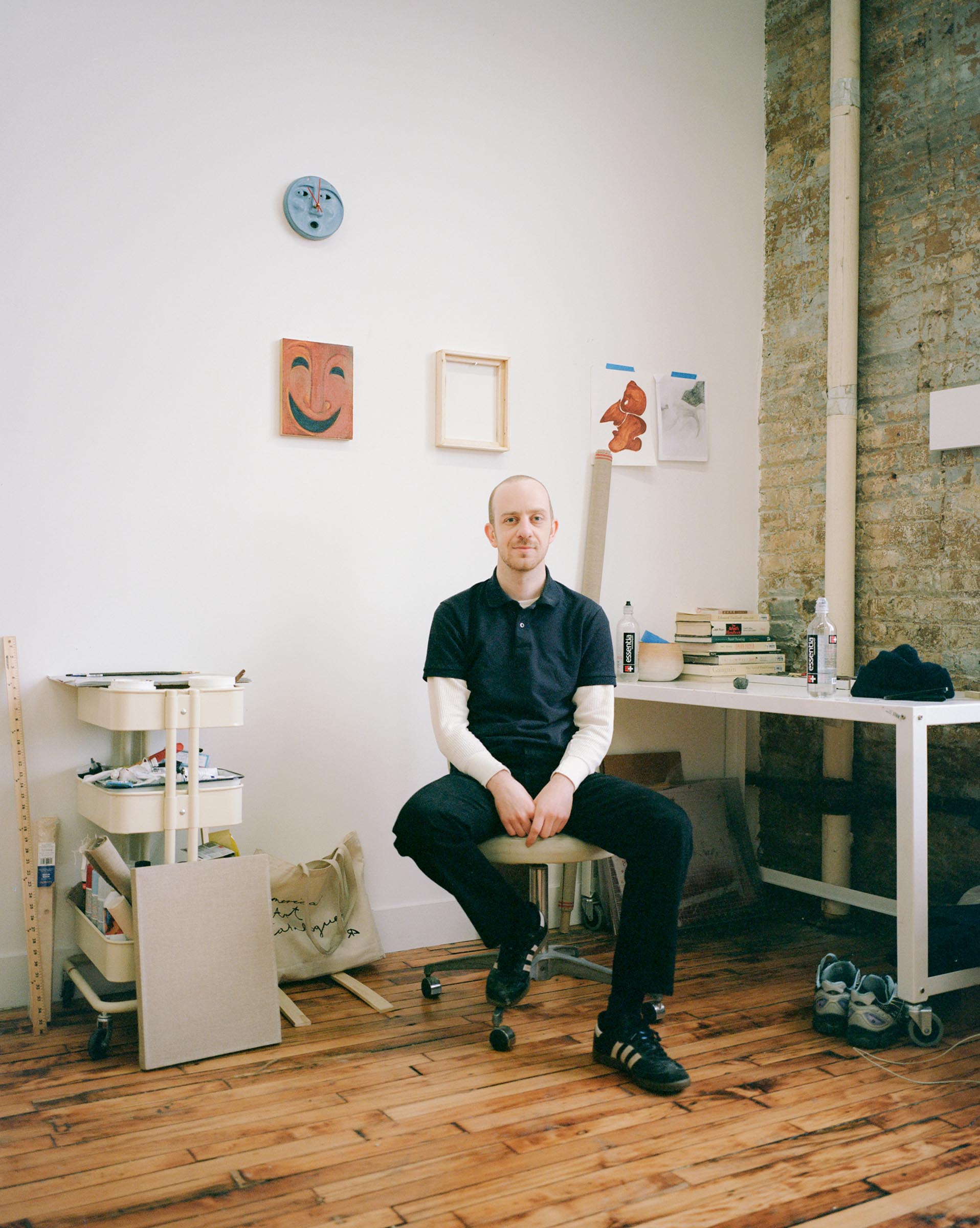How did you get into making art?
I’ve painted and had artistic interest since childhood. Both of my parents are in creative fields—my mother a metal worker and my father an illustrator. They were always encouraging of my creativity when I was young and it gave me a great foundation. I had a detour from making art during college and studied Accounting, but realized this career wasn’t going to make me happy during grad school. I took a leap of faith and dropped out to pursue my passion of being an artist. I began taking city college courses such as screen printing, but began spending a lot more time painting during the 2020 lock down. With all the free time on my hands, I was able to experiment and develop my visual language.
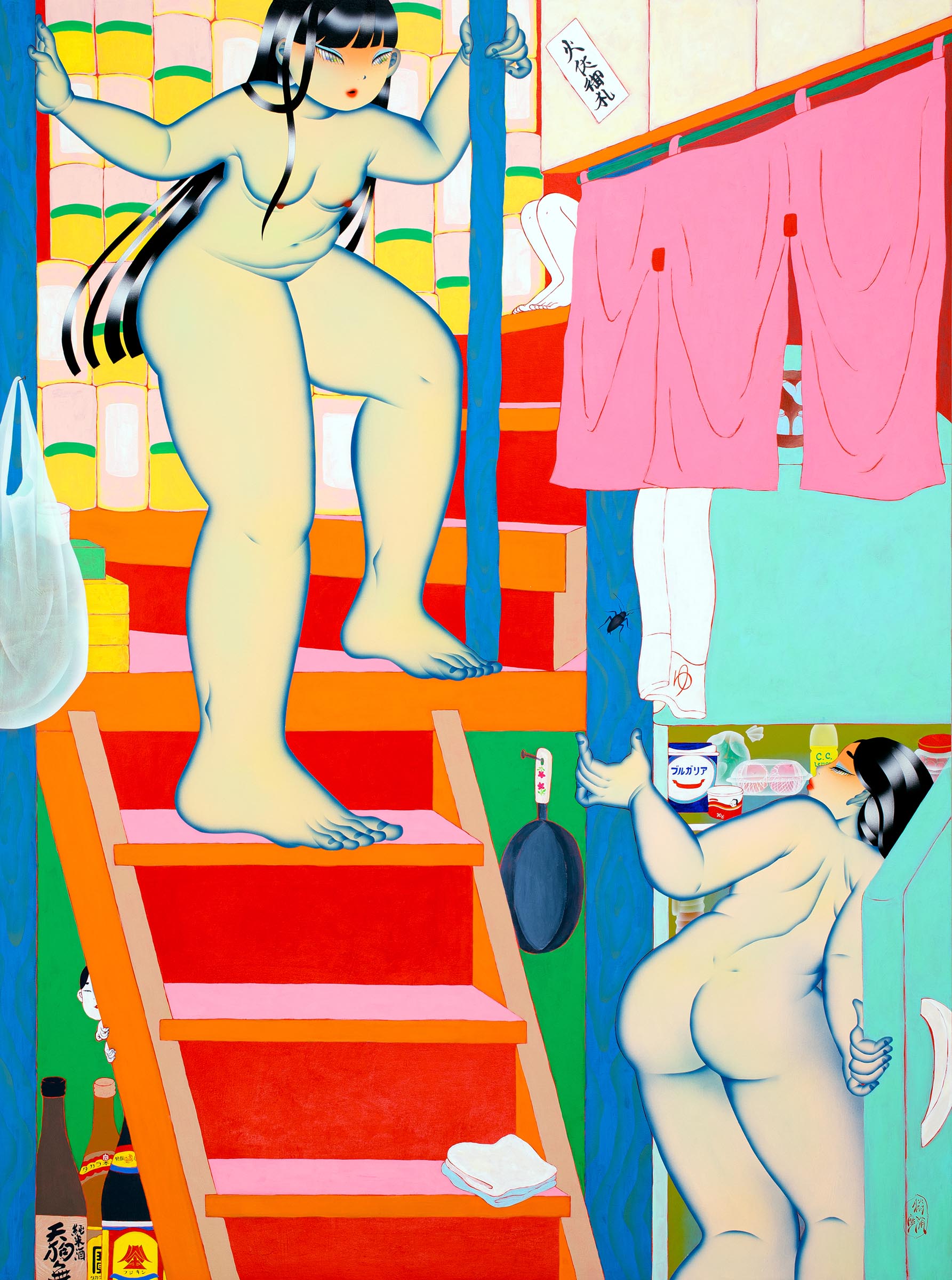
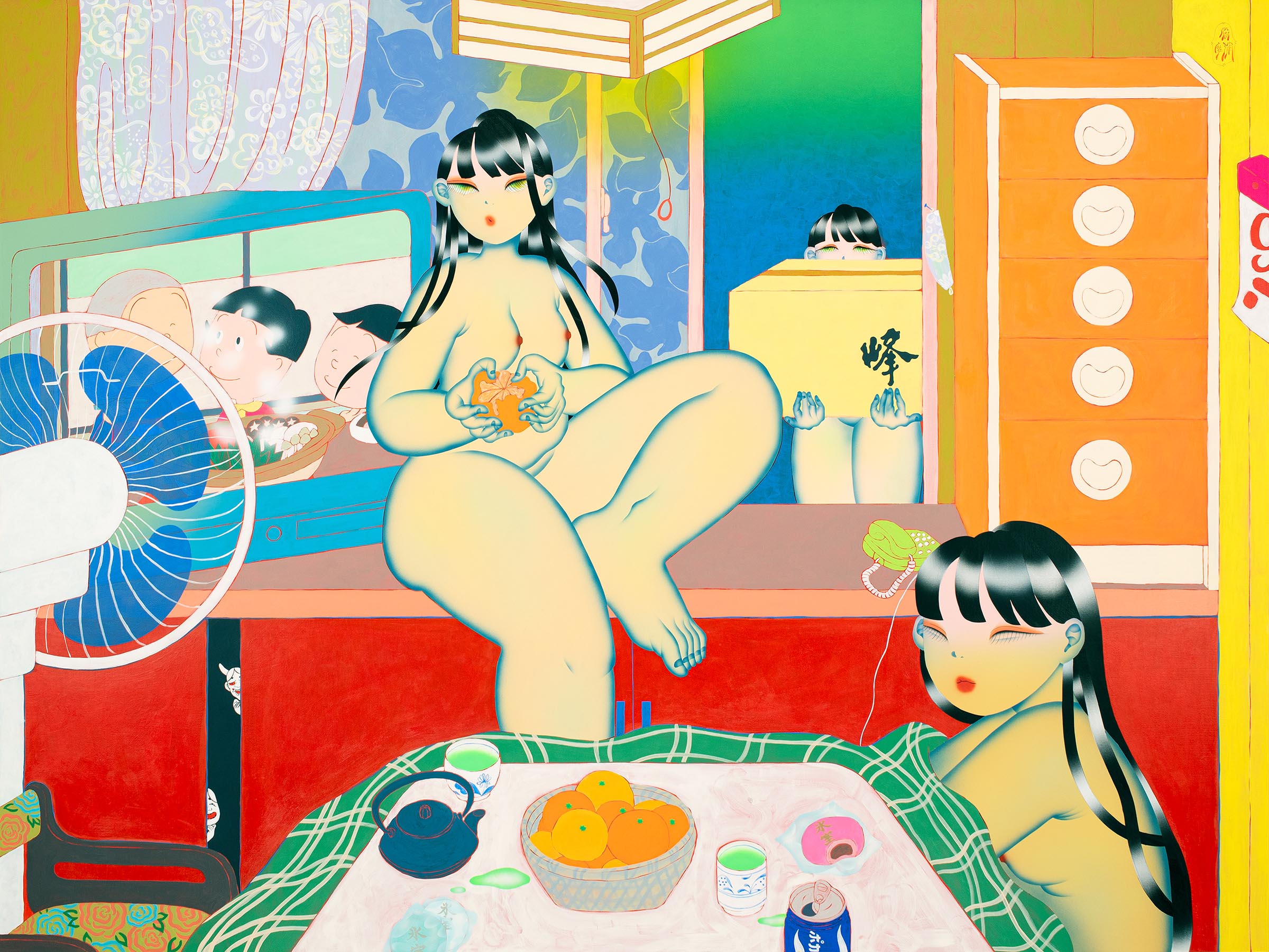
What are you currently working on?
I am currently working on a few new paintings for upcoming exhibitions in Amsterdam at Enari Galler, and in Los Angeles at New Image Art.
I’ve been experimenting with materials such as mineral pigment paint and suihi-enogu (pigmented shell powder), often used in traditional Japanese Nihonga paintings. I’ve been exploring the idea of evolving tradition through the Japanese concept of Tsukumogami, an animism of a household object that obtains a spirit or soul over a century. Tsukumogami were first depicted in the Hyakkiyakō Emaki scrolls of the Muromachi Period (around 1336 to 1573). They were oftentimes represented as little spirits of mundane day-to-day objects such as tansu shelving, koto or biwa instruments, fans, and futon covers. I sometimes wonder how these Tsukumogami spirits would exist in the modern day, if they had followed my family to the San Francisco Bay Area. Would they only exist in Japanese households or would they coexist with other spirits that predated them? Could knowledge, wisdom, or oral tradition take life? I also wonder how it would affect our way of living if we treated our belongings with the care and respect we’d give something that had a spirit. Maybe it would shift the way we currently produce waste or treat the world with a false sense of abundance.
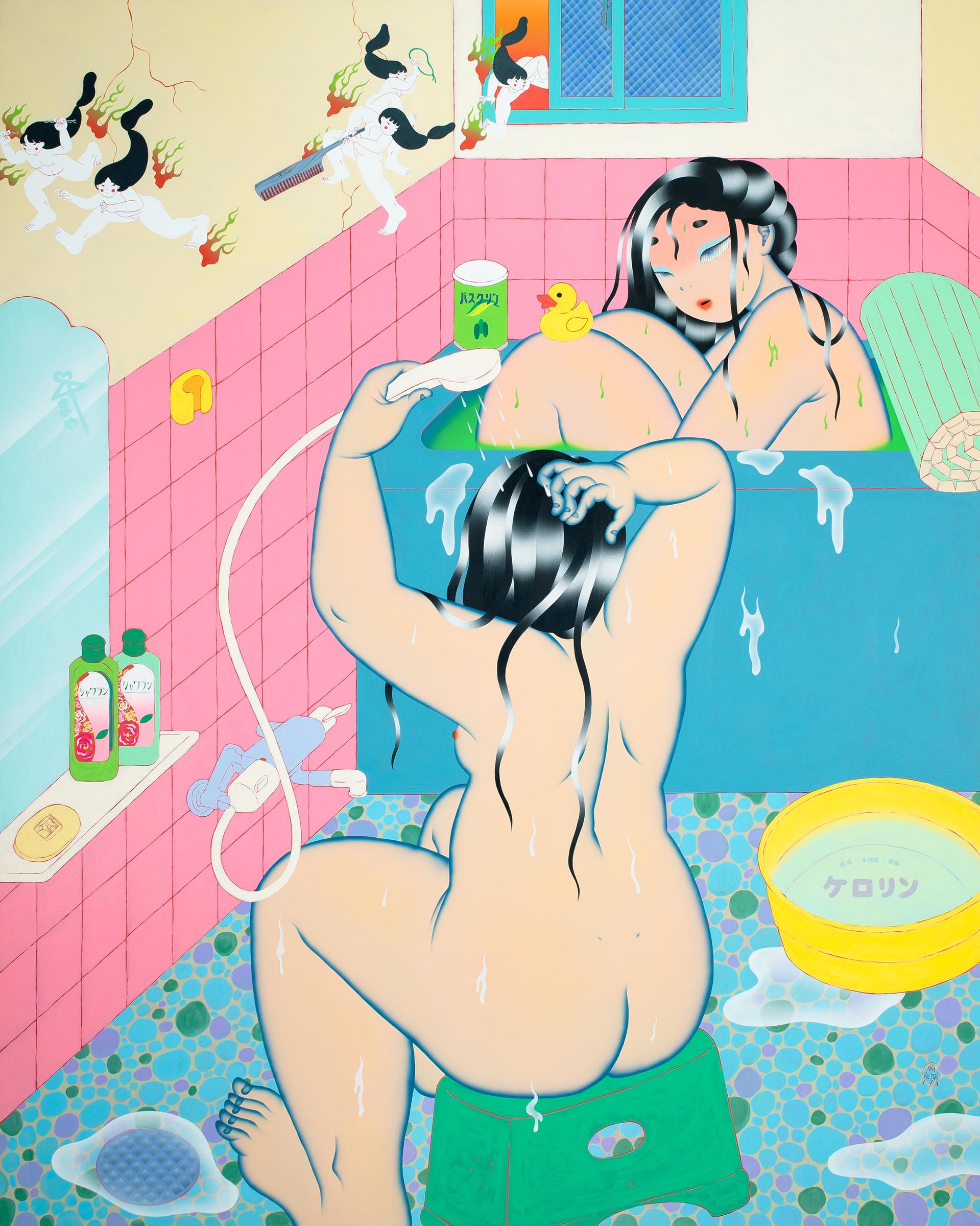
My paintings have often centered around imaginative situations combining my figures alongside the mythological spirits my ancestors believed in.
Maya Fuji
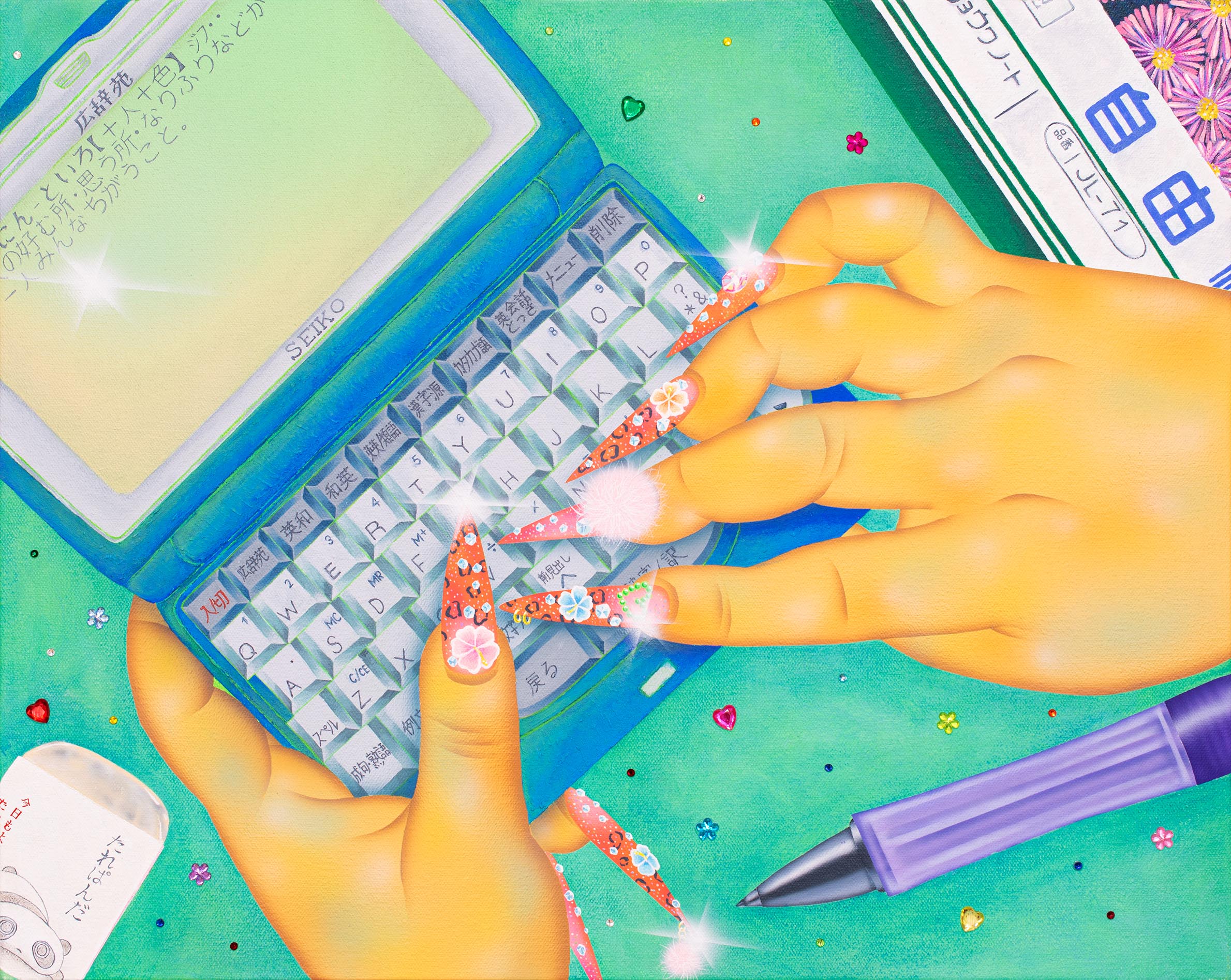
What inspired you to get started on this body of work?
I’ve been inspired by ukiyo-e paintings featuring mythological creatures and spiritual beings ever since I was a child. My first encounter (that I can remember) with this type of artwork was at my mother’s friend’s buddhist temple in Nagoya. We spent a week at a cherry blossom festival hosted on their grounds and encountered a room full of jigoku-e (hell paintings) depicting scenes from Japanese Buddhist hell. This room had to be passed through to go to the bathroom and it terrified me, leaving a strong impression. I think this is where my interest in the supernatural and folklore began.
This body of work has been an ongoing and evolving project over the last couple of years. My paintings have often centered around imaginative situations combining my figures alongside the mythological spirits my ancestors believed in. As I weave past and present together, I interrogate the influence these spirits may have had on me and my family’s history, had they been living amongst us. It makes me wonder what lessons they may have been there to teach.
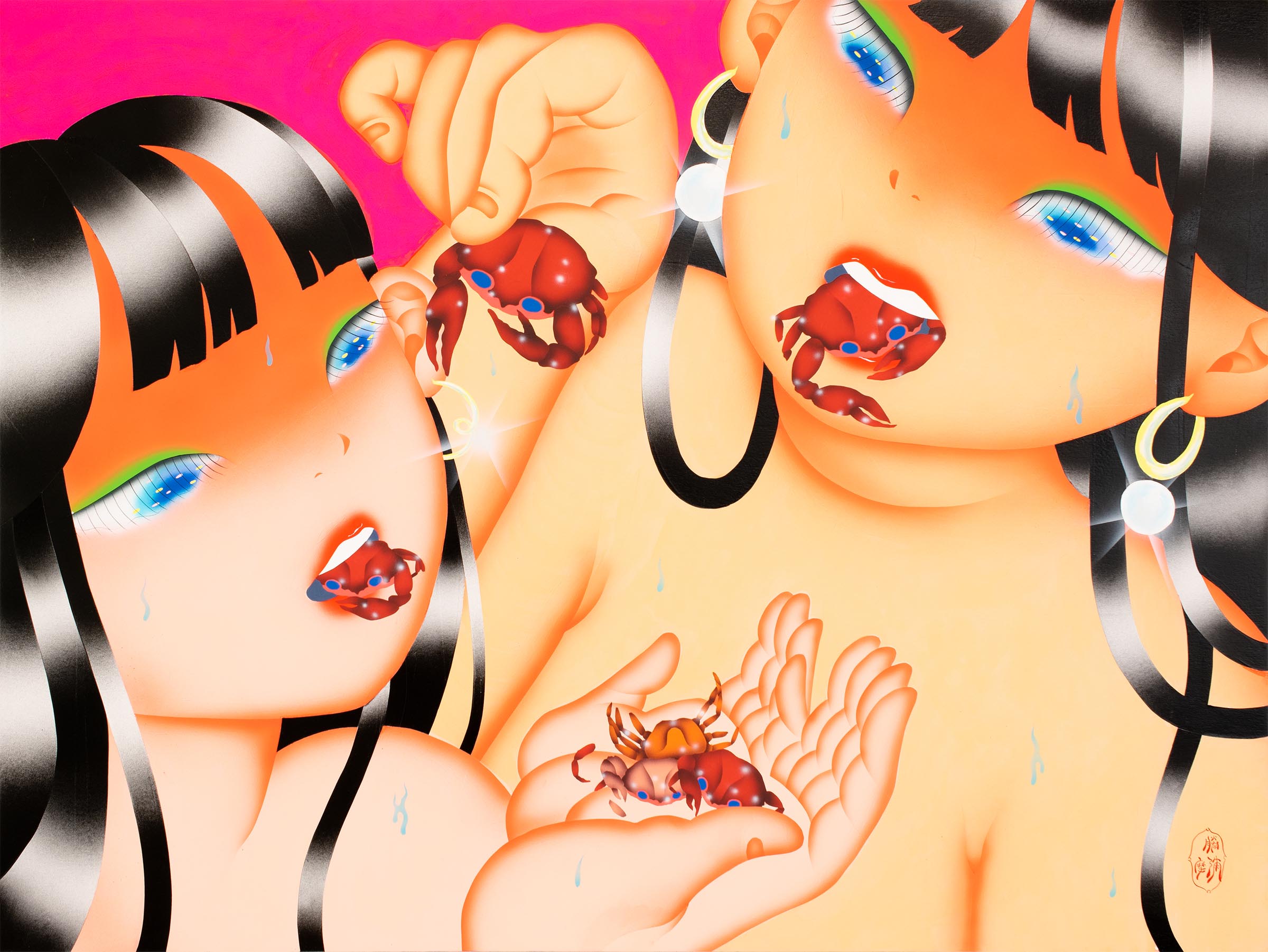

Do you work on distinct projects or do you take a broader approach to your practice?
I do both! I have done very specific projects like my solo exhibition at SWIM Gallery, where I painted the rooms of my late grandmother’s home in Japan. It was a way to memorialize her and what she meant to me as one of my last connections to life in Japan. I think this project also ties into the broader exploration I’ve been doing with mythology and how I interplay mythological tales and lessons with my personal experiences of being a mixed race first generation Japanese American woman in the united states.
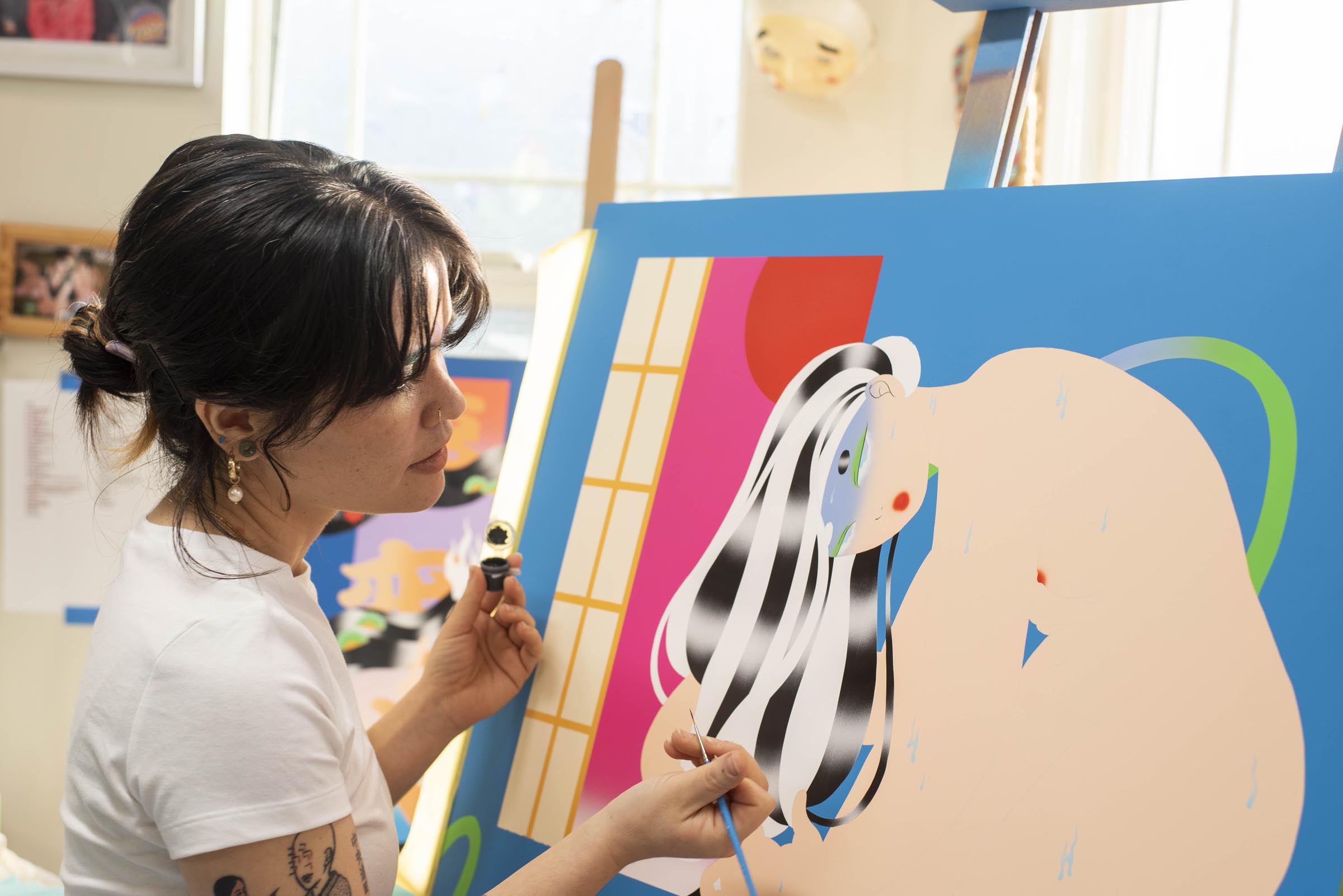
What’s a typical day like in your studio?
The way I work is pretty extreme. I am unable to paint for just a few hours at a time and once I’m focused and in the groove I can’t stop. I often paint for nearly 18 hours a day if I am working on a project. I love seeing the progress and the feeling of being deep in the flow. I’ll then take some time off in-between projects to relax and rejuvenate my mind. I like to listen to podcasts while I paint and am always looking for new ones to listen to!
Who are your favorite artists?
My earliest influences were mostly ukiyo-e masters like Tsukioka Yoshitoshi, Kitagawa Utamaro, and Utagawa Kuniyoshi. I’ve been most strongly drawn to bijinga and yokai themed ukiyo-e, surrounding themes of women bathing or relaxing in domestic spaces and of otherworldly creatures creeping into those spaces. I also have been reading manga since an early age, and artists such as Mizuki Shigeru, Araki Hirohiko (love a JoJo pose!) and Takahashi Rumiko have been favorites!
Where do you go to discover new artists?
I think these days I mostly find new artists on Instagram or at art openings I attend.
Learn more about the artist by visiting the following links:








